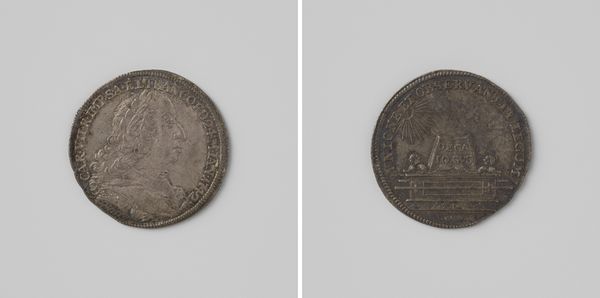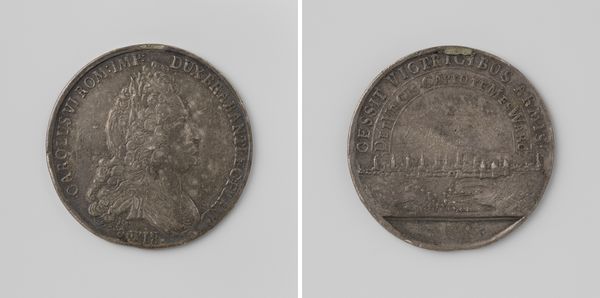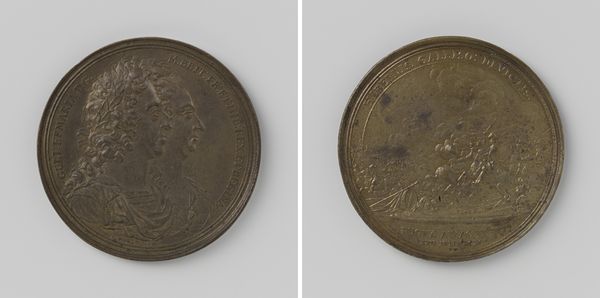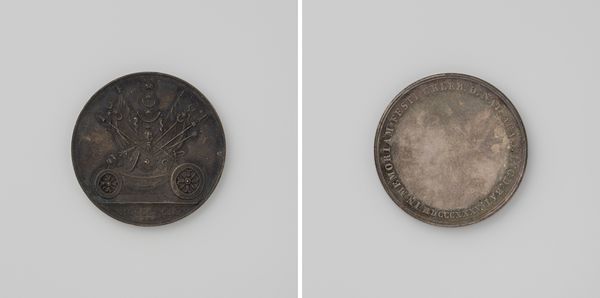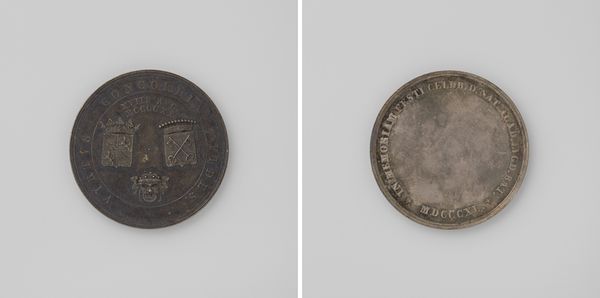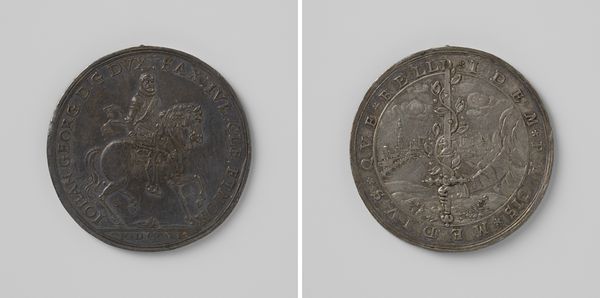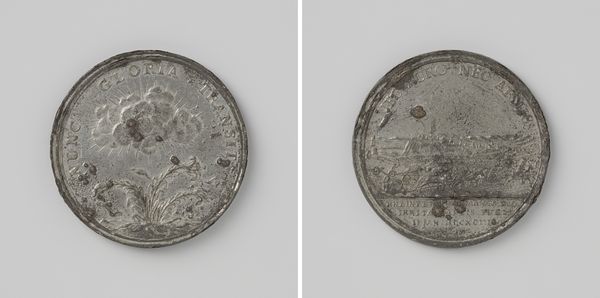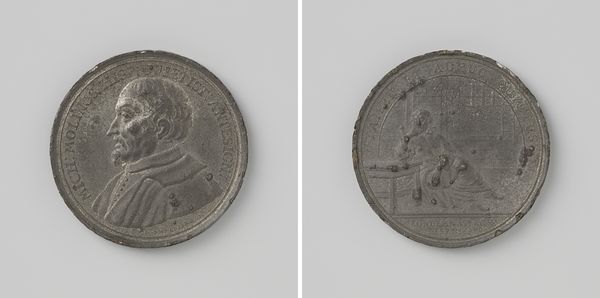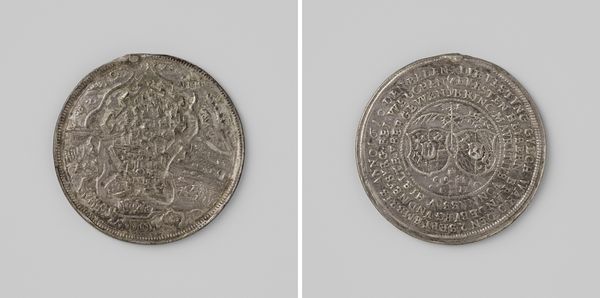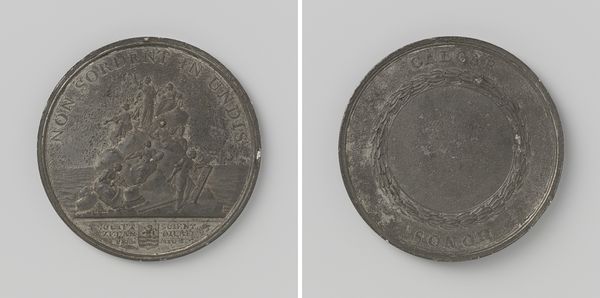
metal, intaglio, bronze, engraving
#
portrait
#
medal
#
baroque
#
metal
#
intaglio
#
classical-realism
#
bronze
#
history-painting
#
engraving
Dimensions: diameter 3.7 cm, weight 23.65 gr
Copyright: Rijks Museum: Open Domain
Curator: What we have here is a bronze medal, an engraving really, commemorating the coronation of William III and Mary II Stuart in 1689. Editor: It feels intensely formal, like history captured in a tiny, precious mirror. But the way the figures are rendered, there's something stiff, almost… haunted about them. Like peering into the past and sensing the weight of power. Curator: Well, these commemorative medals served specific political purposes. They were tools to shape public perception, to solidify the legitimacy of the new monarchs after the Glorious Revolution. Jan Smeltzing was tasked to convey power. Editor: Absolutely. I’m intrigued by how this little object tries to hold so much meaning. You've got William looking every bit the baroque strongman, but that cool, almost metallic quality mutes the emotional resonance. Almost as if its saying "look at our rulers!" but does't convey the emotion about *why* we must look. Curator: Smeltzing and other medallists understood how images circulated in early modern society. Think of these less as isolated artworks, and more as early forms of political advertising that reinforced this power in a way that the public could buy into. Editor: Right. And I imagine a medal like this becoming, not just a statement, but part of a network. Did owning something like this shape your identity, too, especially during a pivotal time for Dutch politics? Curator: Precisely! Holding a piece like this creates an interesting intimate relationship to the historical moment, it allows people to hold power itself in the palm of their hand. The circulation of this medal was, if you think about it, very similar to circulating ideology. Editor: It definitely reframes how I understand the art and history. This isn't just metal; it is tangible evidence of power. It’s a whisper from 1689 asking us to consider what power really means. Curator: A truly insightful perspective, it seems that despite the grand aspirations of its commissioners, this medal now provokes quite profound thoughts on the passage of time and history itself.
Comments
No comments
Be the first to comment and join the conversation on the ultimate creative platform.

